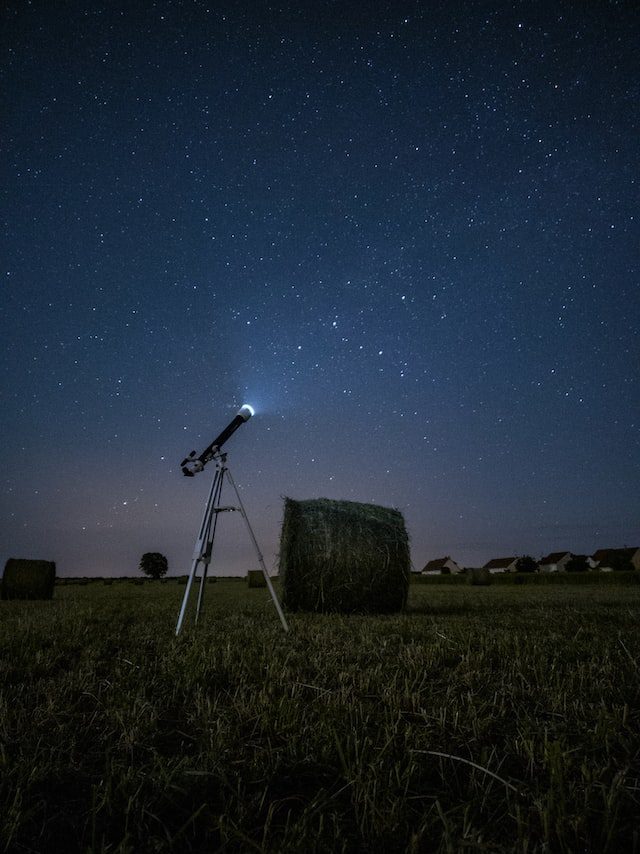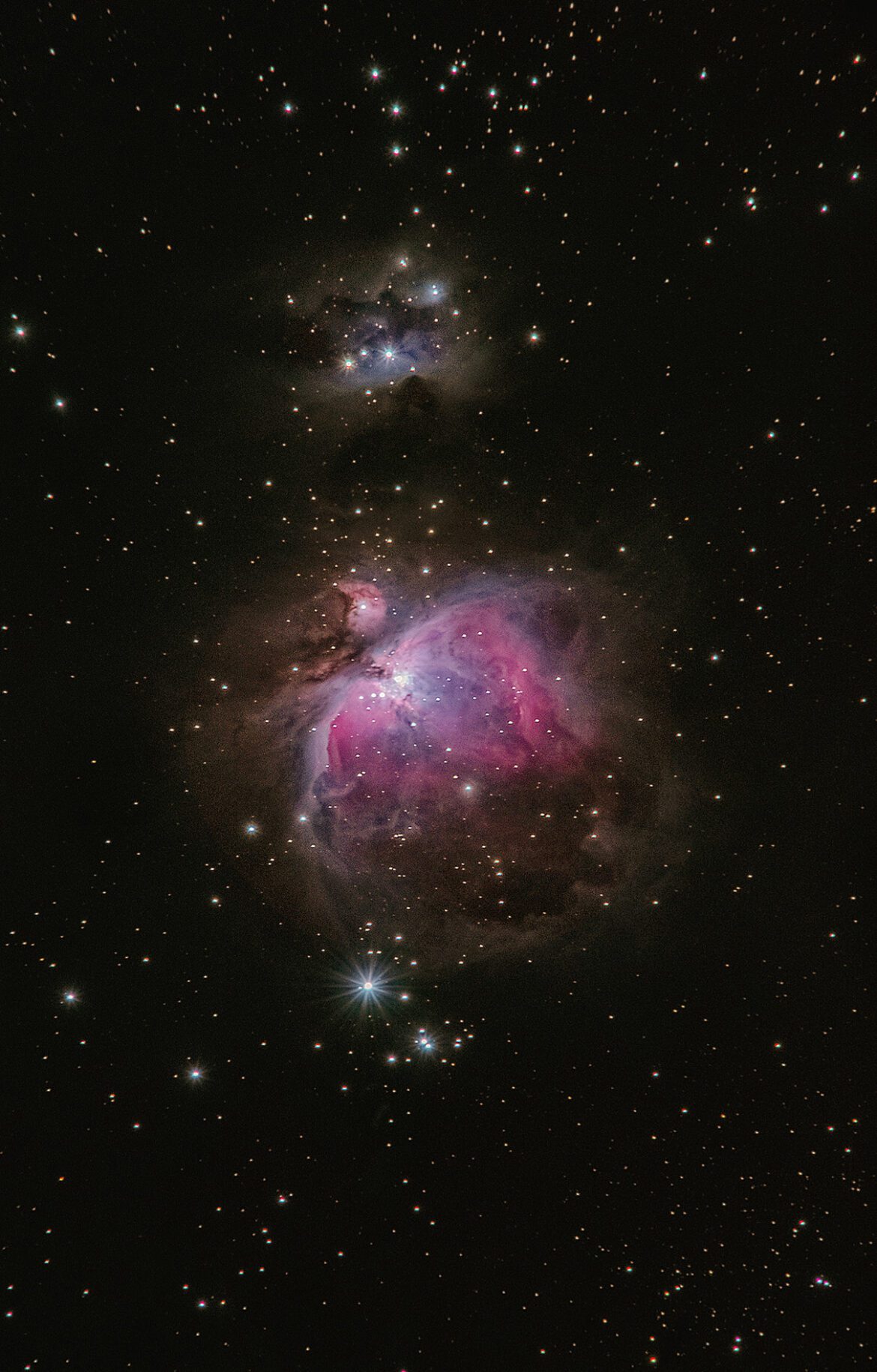For those who find themselves staring into the night sky in wonder, astrophotography (a form of long exposure photography) is a good photography genre to explore. With tripods and extremely long shutter speeds, you can capture stunning starscapes, time-lapse images, and light paintings that show how stars move in the sky as the Earth rotates.
Astrophotography for Beginners Guide
If you’ve ever wanted to take beautiful pictures of the night sky, then astrophotography is the perfect hobby for you. Astrophotography is a special type of photography that requires patience, dedication and the right equipment. From planning your shoot to taking that perfect shot, this guide will provide you with all the tips and tricks you need to get started in astrophotography for beginners. So, grab your camera and let’s get started!
No matter how much experience you have with photography, astrophotography can be a challenge. You’ll need to understand the basics of capturing starlight and weather conditions that will make or break your photos. You’ll also need to understand which camera settings are best for photographing the night sky, and you’ll need to be aware of what accessories and equipment you will need in order to get the perfect shot. With this guide, you’ll learn everything you need to know about getting started in astrophotography for beginners.
Featured Photo by Alexander Andrews on Unsplash
What is astrophotography?
Astrophotography is the art, science, and technology of capturing images of astronomical objects and phenomena. It involves the use of specialized equipment and techniques to capture images of objects in the night sky, such as stars, planets, nebulae, and galaxies.
The first step in astrophotography is to choose the right equipment for the job. A DSLR camera is a good option for beginners, as it will allow you to experiment with different settings and get great results. You will also need a tripod to keep your camera steady while you take long exposures. A wide-angle lens is also a good choice for astrophotography, as it will allow you to capture more of the night sky in your frame.
Once you have your equipment set up, you will need to find a dark location away from light pollution to set up your camera. Once you have found a dark spot, set up your tripod and camera and point it towards the night sky. If you are shooting indoors, you can use a window to frame your shot.
To take a picture of the night sky, you will need to use a long exposure setting on your camera. This means that your shutter will be open for a longer period of time, allowing more light into the camera sensor. The downside of using a long exposure is that any movement during the exposure will result in blurriness. To avoid this, use a remote shutter release or timer to take your picture.
Tips for getting started in astrophotography
There are a few things you should keep in mind when getting started in astrophotography. First, you will need a DSLR camera. A DSLR is necessary to capture the high-quality images of the night sky that you desire. Second, use a tripod! A tripod is key for keeping your camera still and ensuring sharp images. Third, don’t be afraid to experiment. Astrophotography is all about trial and error. Try different settings and configurations until you find what works best for you and your equipment. Finally, have fun! Capturing the beauty of the universe is a rewarding experience that should be enjoyed.
The best equipment for astrophotography
If you’re serious about astrophotography, you’ll need to invest in some quality equipment. Here is a list of the best equipment for astrophotography to help you get started:
-A telescope: This is the most important piece of equipment for astrophotography. A good telescope will allow you to magnify and capture images of distant objects in space.

Astrophotography For Beginners – Telescope – Photo by Simon Delalande on Unsplash
-A camera: You’ll need a DSLR or mirrorless camera with manual controls to get the best results. Make sure to invest in a high quality camera lens as well.
-A tracking mount: This is an essential piece of equipment if you want to avoid blurry images. A tracking mount will keep your camera steady while it tracks the movement of the stars.
Astrophotography For Beginners – Tracking Mount
-A software program: You’ll need a software program like Adobe Photoshop or Lightroom to process your images.
How to take great astrophotography shots
If you want to get into astrophotography, but don’t know where to start, this guide is for you. In it, we’ll go over the basics of how to take great astrophotography shots.
We’ll start with the equipment you’ll need. For DSLR cameras, you’ll need a tripod, a camera with manual controls, and a lens with a wide aperture. For point-and-shoot cameras, you’ll need a tripod and an adapter that allows you to attach the camera to the tripod.
Once you have your equipment, set it up in an area with little light pollution and away from city lights. Then, find an interesting subject to photograph, like the Moon or a planet. If there are stars in your shot, use a long exposure time to make them streaks of light.
Finally, post-process your photos to bring out the best in them. This can be as simple as increasing the contrast or adding a few filters. With some practice, you’ll be taking amazing astrophotography shots in no time!
Astrophotography For Beginners –
Assuming you would like tips for astrophotography:
1. Use a tripod
2. Use the timer or remote shutter release
3. Shoot in RAW
4. Find a dark location
5. Use a fast lens
6. Set your camera to manual mode
7. Set your ISO
8. Take test shots
9. Expose for the stars, not the foreground
10. Shoot in live view mode
The Different Types of Astrophotography
There are many different types of astrophotography, each with its own unique challenges and rewards. Here are some of the most popular types:
Deep-sky photography is perhaps the most popular type of astrophotography. It involves photographing distant objects such as galaxies and nebulae. Deep-sky photography requires a telescope or a long focal length lens, and often long exposure times to capture all the faint details.
Solar system photography is another popular type of astrophotography. It involves photographing planets, moons, comets, and other celestial bodies within our own solar system. Solar system photography generally requires shorter exposure times than deep-sky photography, but can still be challenging due to the vast distances involved.
Milky Way and star trail photography are both types of wide-field astrophotography. They involve photographing the Milky Way galaxy or star trails across the night sky. Wide-field astrophotography generally requires shorter exposure times than deep-sky or solar system photography, but can be just as challenging due to the need to accurately track the stars during long exposures.
Macro and micro Photography is a type of Astrophotography that captures closeups of astronomical objects such as stars, planets, nebulae, and galaxies using special equipment like telescopes outfitted with macro lenses or microscopes. This style of Astrophotography often results in stunning images that reveal intricate details invisible to the naked eye.
Pros and Cons of Astrophotography
Assuming you would like a more general overview of the pros and cons of astrophotography:
Astrophotography is a type of photography that involves capturing images of astronomical objects and phenomena. It can be challenging and requires specialized equipment, but the results can be stunning.
Some pros of astrophotography include:
-The ability to capture images of things that are not visible to the naked eye, such as distant galaxies
-Stunning images that can be shared with others
-The challenge of learning new techniques and mastering difficult equipment
Some cons of astrophotography include:
-The cost of specialized equipment
-The time investment required to learn new techniques and master difficult equipment
-Weather conditions can impact results
Last Shutter Thoughts
Astrophotography is an amazing hobby that can be both rewarding and challenging. With the right gear, knowledge, and patience anyone can take beautiful pictures of the night sky. We hope our guide helped you get started on your astrophotography journey! Remember to practice patience and experiment with different settings to capture unique shots like never before. So grab your telescope or camera and start shooting some amazing shots of the stars tonight!
Was this article on Astrophotography For Beginners helpful? Do you have any advice for beginners out there that are barley starting on Astrophotography? If so please leave your comments or advice below.
Don’t forget to check out other articles on Astrophotography.

